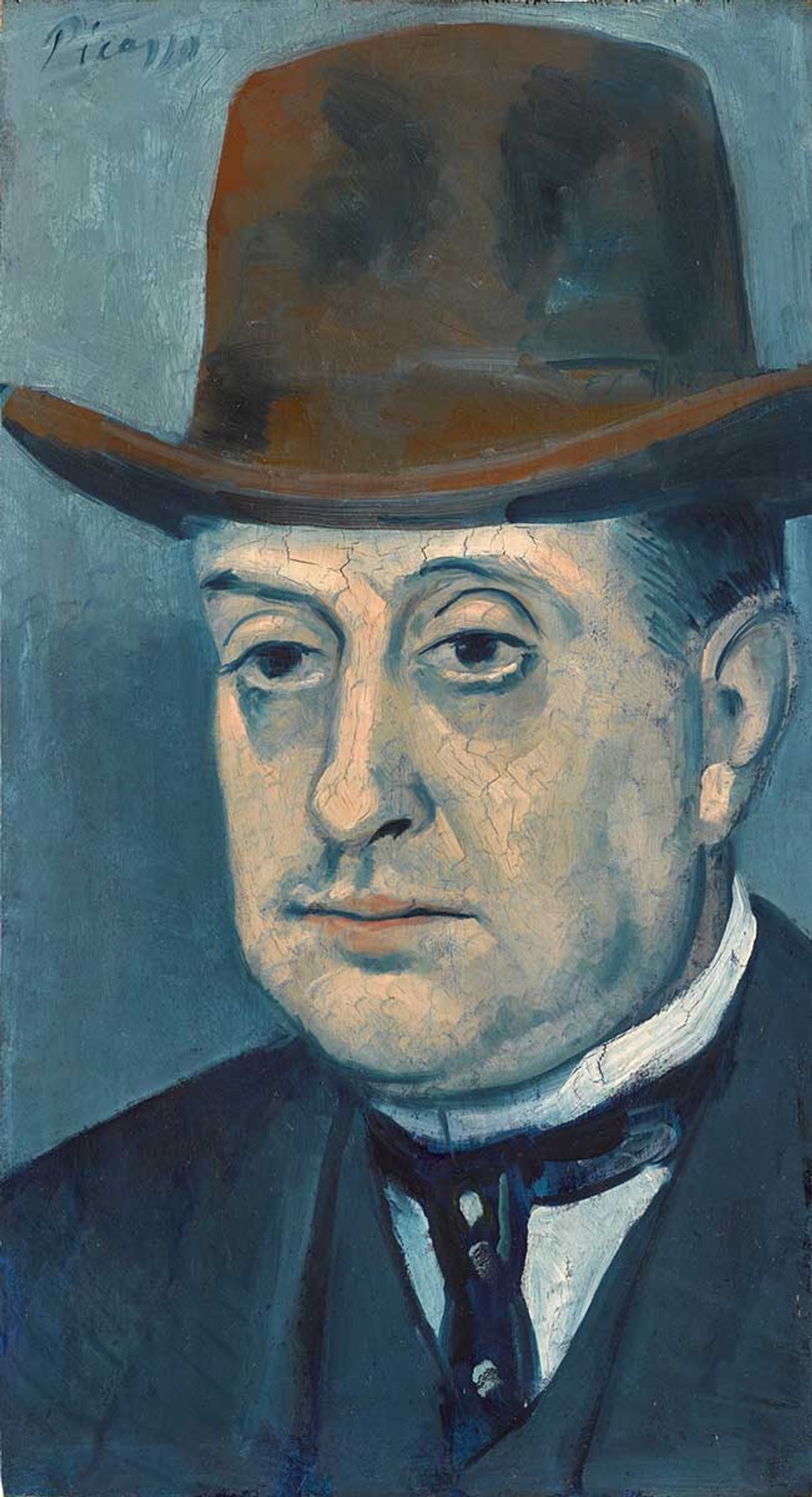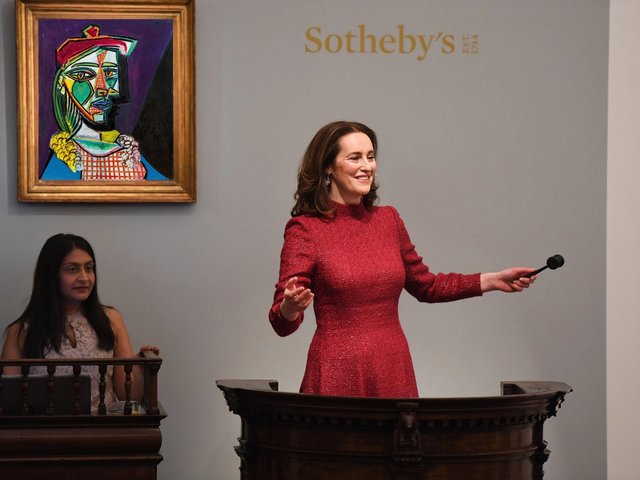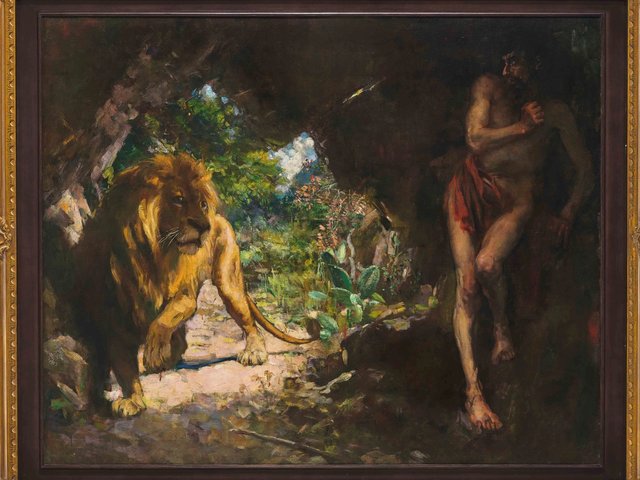Pablo Picasso’s Lluís Vilaró (1903-04)
Sotheby’s Modern and Contemporary evening sale, London, 6 March
Estimate: £5m-£7m
Fewer than five works from Picasso’s Blue Period (between 1901 and 1904) have come to auction in the past 15 years. In 2010, Sotheby’s sold a 1903 portrait of Angel Fernández de Soto for $51m. And in 2015, the same auction house sold La Gommeuse (1901), made on the cusp of the Blue Period, for $67m. It is thought that this artistic period was provoked by Picasso’s prolonged feelings of depression, possibly due to the suicide of his friend, the painter and poet Carles Casegemas. It is marked by sombre, monochromatic compositions predominantly in hues of blue and green. This melancholic portrait depicts Lluís Vilaró, a flour merchant and artistic patron who was part of the circle that gathered around the Els Quatre Gats nightclub in Barcelona, where a young Picasso staged the first solo exhibition of his art. Although relatively little is known about Vilaró, he owned at least one other work by Picasso in addition to commissioning this portrait, according to Sotheby’s. The inscription on the reverse of this work reads: “To my Friend, In Memory, Pablo Picasso.”
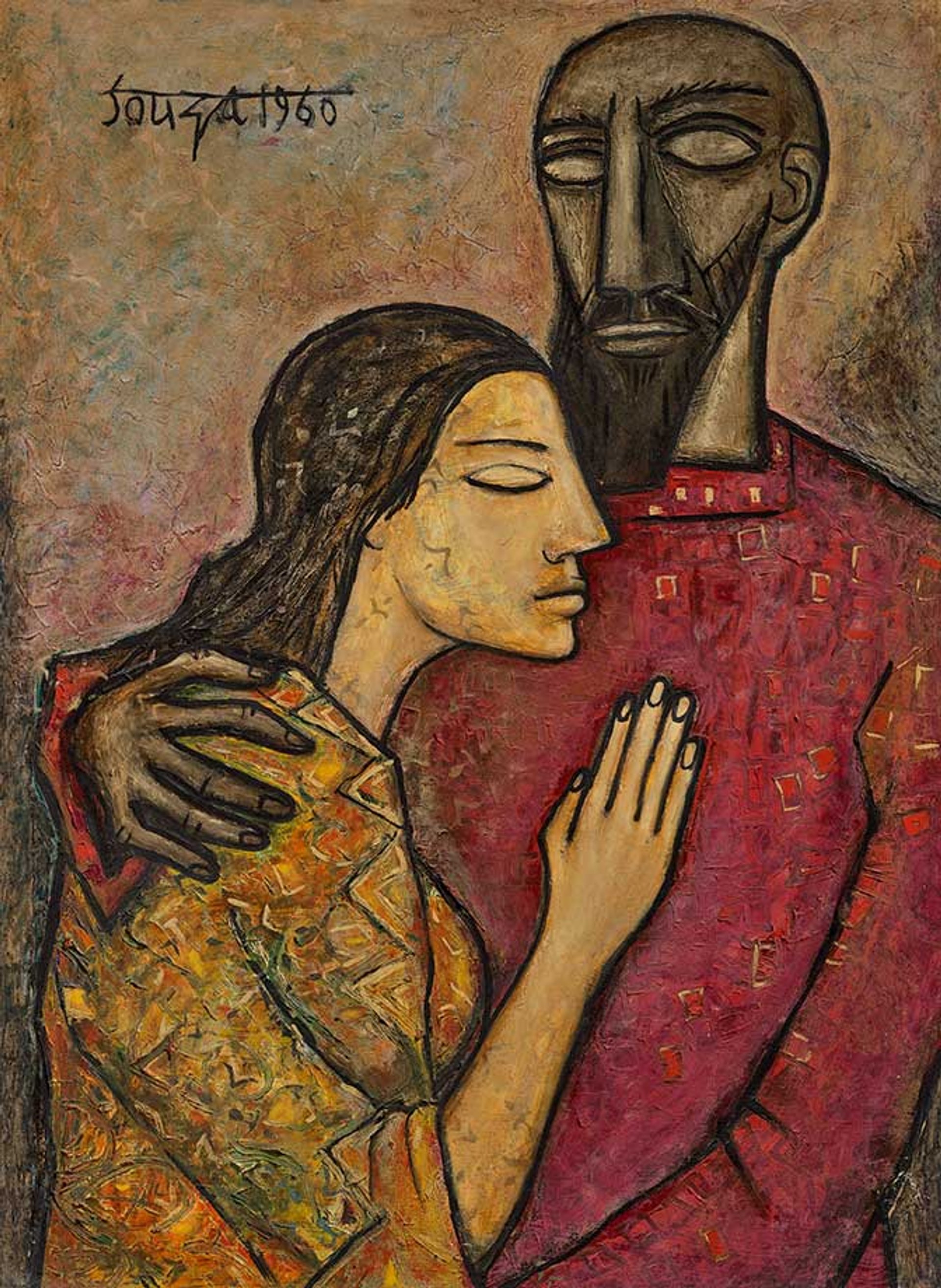
Courtesy Christie’s
Francis Newton Souza’s The Lovers (1960)
South Asian Modern and Contemporary Art, Christie’s, New York, 20 March
Estimate: $700,000 to $1m
Christie’s catalogue entry for this painting of two lovers by Francis Newton Souza is the first time it has been reproduced in colour. It was previously printed in black and white for the artist’s 1962 monograph, authored by Edwin Mullins. Later, it was included in a book by the famed Indian art historian Geeta Kapur, Contemporary Indian Artists (1978). The work was sold in the early 1960s by Gallery One—a pioneering London commercial gallery that ran between 1953 and 1963 and which introduced many Indian Modernists to the Western market. It was bought by the late Robin Howard, a British patron of Modern dance, whose descendants have consigned it to this sale. This year is the centenary of Souza’s birth. To mark the occasion, around one third of the lots in Christie’s South Asian Modern and contemporary evening sale are by the artist.
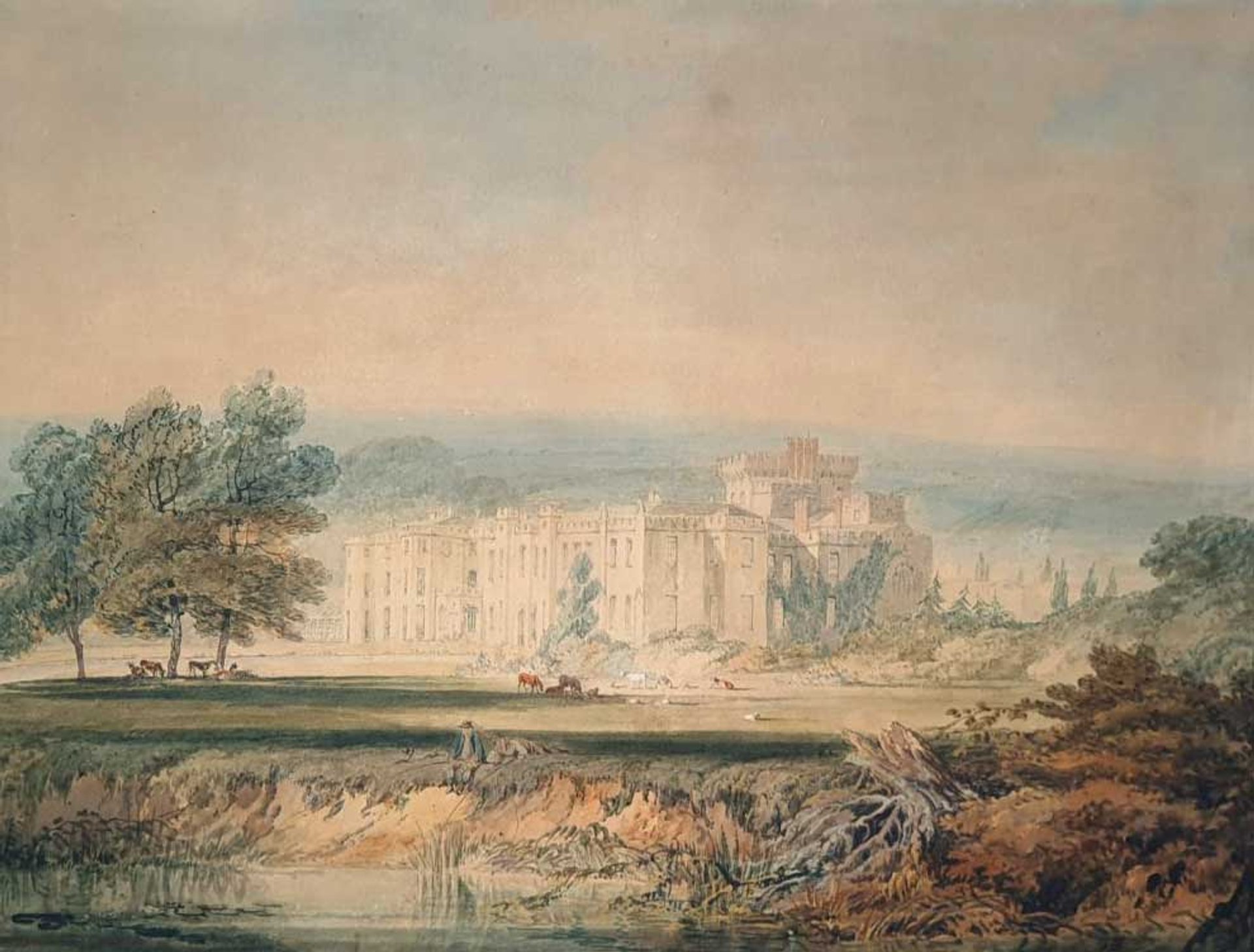
Courtesy Minster Auctions
J.M.W. Turner’s Hampton Court (around 1795)
Antiques and Fine Art, Minster Auctions, 6 March
Estimate: £30,000-£50,000
This watercolour of Hampton Court Castle in Herefordshire, England, was found in the attic of the nearby country estate Kinsham Court, by the descendants of John Arkwright, who used to live there. It was given by Arkwright’s family to the local auction house, Minster, which has attributed it to Turner. Minster specialist James Pearn told the BBC that the painting was stored in a file in between some 19th-century hunting prints which were “nothing very exciting”. The painting depicts Hampton Court from a south-east direction across the River Lugg. Arkwright, one of the wealthiest landowners in the county, owned both Hampton Court and Kinsham Court in his lifetime. The auction house has dated the work to around 1795, making Turner just 21 at the time of its execution, although he would have already had several years of painting experience, having entered the Royal Academy Schools in London aged 14 and started exhibiting the year after. While Turner’s watercolours can easily fetch six figures at auction, this work lacks a signature, probably contributing to its more conservative estimate. Nonetheless, Pearn says that “the signature is in the style”.

Courtesy Christie’s
René Magritte’s L’ami intime (the intimate friend) (1958)
The Art of the Surreal, Christie’s, London, 7 March
Estimate: £30m-£50m
Two years ago in London, Sotheby’s set the auction record for Magritte at £51.5m. Christie’s is now attempting to fetch its own headline price for the artist with this painting of an unknown sitter, estimated at £30m to £50m. Leading the house’s dedicated Surrealist evening sale in London, L’ami intime contains a number of the artist’s most recognisable—and most coveted—motifs, including the bowler hat. It comes from the collection of the late Gilbert Kaplan, the founder of the publication Institutional Investor, and his wife, Lena Kaplan, who bought it from Sotheby’s London in 1980 for £90,000—around 550-times less than Christie’s upper estimate. The work was previously exhibited in 1998 at the Museum of Fine Arts in Brussels. This year also marks the centenary of André Breton’s Surrealist Manifesto, which defined the revolutionary artistic movement.


